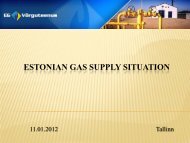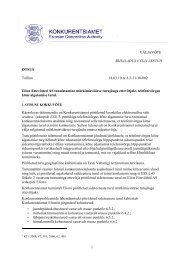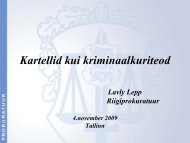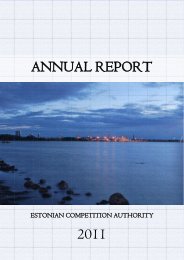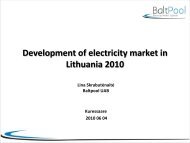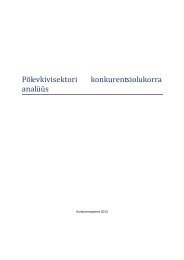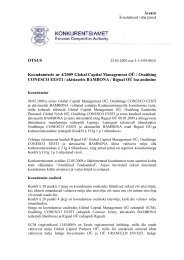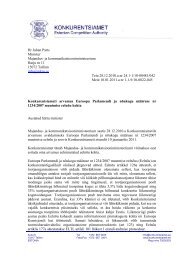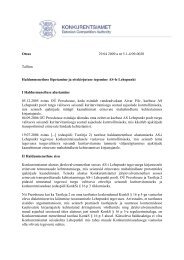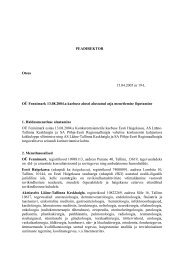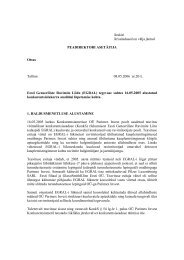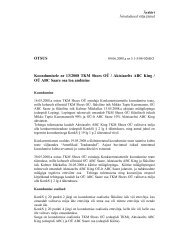ANNUAL REPORT 2010 - Konkurentsiamet
ANNUAL REPORT 2010 - Konkurentsiamet
ANNUAL REPORT 2010 - Konkurentsiamet
You also want an ePaper? Increase the reach of your titles
YUMPU automatically turns print PDFs into web optimized ePapers that Google loves.
capable of supplying the required gas quantities. The regulation prescribes creating a<br />
preventive action plan and an emergency plan in the future.<br />
The share of natural gas in the primary energy supply of Estonia is 10.7% (see figure 4),<br />
whereas the share of natural gas in the production of electricity only amounts to 4.0% and<br />
as Estonia is an exporter of electricity, it is possible to cover the entire electricity demand<br />
without the use of natural gas.<br />
FIGURE 4. Share of primary energy by fuel types<br />
From the perspective of supply dependability, natural gas bears great significance in the<br />
production of heat where the share of natural gas reaches 48.1%. Of the biggest cities,<br />
district heating is 100% dependant on natural gas in Rakvere, Jõgeva, Rapla, Põlva, etc. The<br />
share of gas is significant, for example, in the production of heat in Tallinn, Viljandi,<br />
Sillamäe and Narva. In the year <strong>2010</strong>, AS Kohtla-Järve Soojus started to produce heat<br />
partially from natural gas in its gas boiler house with a 100 MW thermal output that was<br />
built a year earlier.<br />
Compared to Western Europe, local natural gas heating is relatively unpopular in Estonia.<br />
Smaller gas networks were actively developed mostly in real estate development areas until<br />
the economic crisis of the year 2008. The gas quantity that AS Eesti Gaas, the biggest<br />
natural gas retailer, sold to homeowners in the year 2009 only amounted to 9.3% of total gas<br />
41



